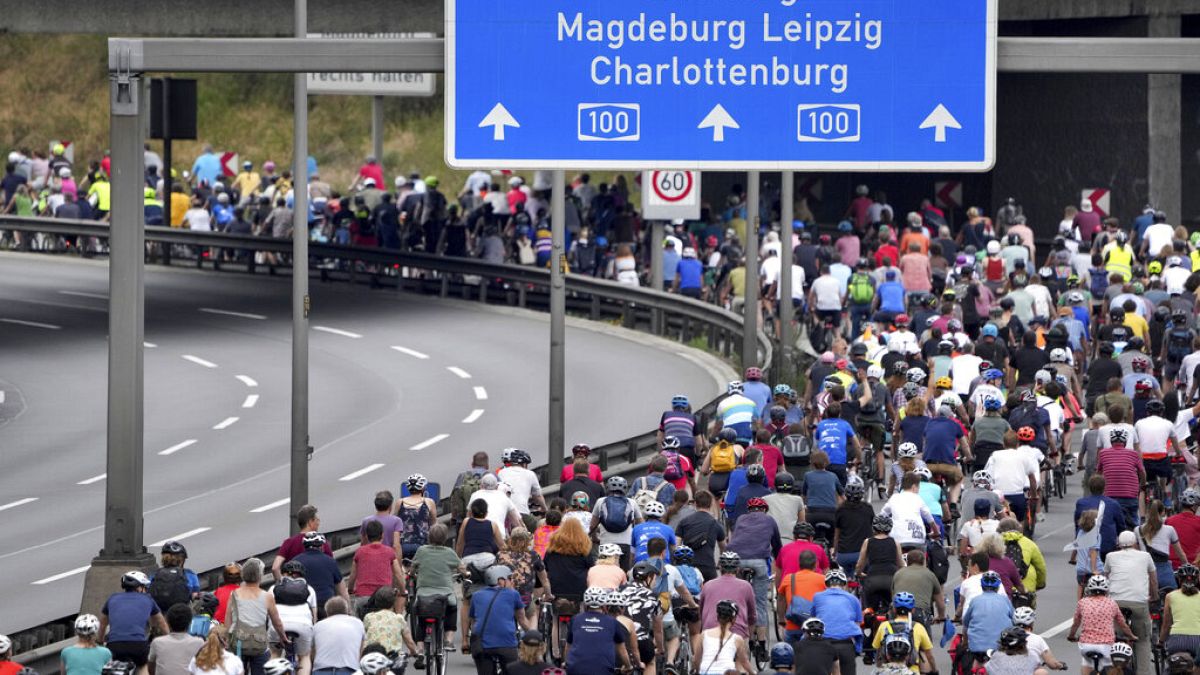Berlin’s local government is facing lawsuits and criticism that its policies are endangering cyclists amid nationwide protests urging more space for those riding bikes.
Cars and bicycles crowd the streets at a busy intersection in central Berlin. This spot that leads to one of the capital's trendy neighbourhoods is also where a 26-year-old cyclist was hit by a truck last month and later died from his injuries.
Activists say people on their bikes are being killed because there isn't enough space allocated to them.
“People who cycle in Berlin are often facing life and death situations, they are often scared for their lives when cycling and the government fails to protect cyclists,” says Mara Hasenjuergen, a communications officer with the cycling NGO "Changing Cities".
Five people are suing Berlin’s government for not providing protected space for cyclists.
Protesters demonstrated last week against Berlin's local government putting on hold the majority of planned cycling superhighways.
The city's local government told Euronews that it is not cancelling plans for the superhighways, but rather delaying them because they need more time to plan them out. They say that planning these routes take time because they are long and complicated and may not be safe for cyclists to use, and that they need to fit into the city's budget.
446 cyclists killed
Experts say part of the problem is that the national government decides important road rules that restrain cities from implementing strategies that make sense for them.
Giulio Mattioli, a research fellow at TU Dortmund University’s department of spatial planning, said that it is a crucial factor putting Germany behind other European countries.
“It holds back even cities that would like to go further than others. And maybe by going further, they could show that these things can work, that they're not a big deal. And they can set the example for others,” Mattioli said.
Some want to see Germany follow the example of Paris's mayor Anne Hidalgo, who has been introducing infrastructure and spending millions to increase space for cyclists.
A member of Berlin's local government says she wants her city to find inspiration in the Hidalgo's work. “We want more space for greener outskirts, for pedestrians, for cyclists. And in that way, she (Paris mayor Anne Hidalgo) changed the city to something positive. I think Berlin can go the same way,” says Linda Vierecke with the Social Democrats, who are in a coalition with the Christian Democrats for Berlin’s city-state government.
Activists say more lanes wouldn't just help cyclists, but drivers too.
“The streets would get emptier because more people would be able to choose the bike. It is also, for car drivers, very stressful to share road space with cyclists,” says Hasenjuergen.
Last year, 446 cyclists were killed in Germany, according to the cycling NGO ADFC. More demonstrations are planned across the country to protest for more safety for children cyclists.












